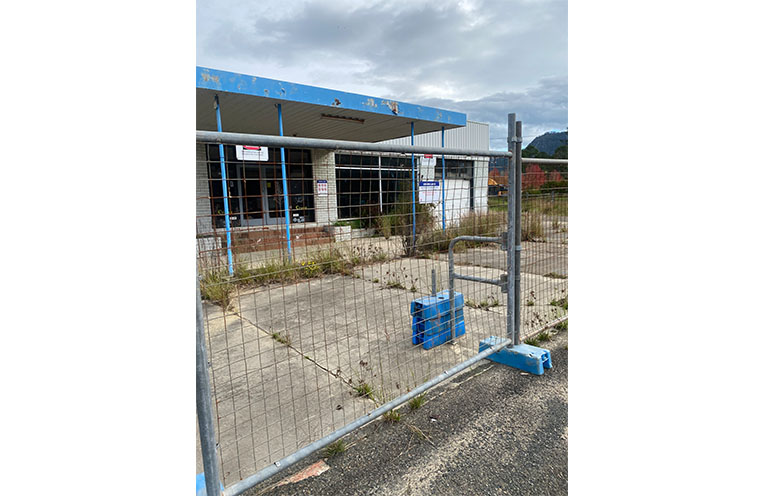
NSW Crown Lands has yet to complete its investigations into the extent of contamination under the old Gloucester Machinery site opposite Billabong Park in Denison Street.
MidCoast Council has been considering acquiring the site for a new visitor information centre.
The site was used as a service station until about 15 years ago and has underground fuel storage tanks.
NOTA previously reported (20 November) that the site had become Crown land, and that it had been fenced off because of contamination.
“Crown Lands is now investigating remediation plans for the site,” said a spokesperson for the Department of Planning, Housing and Infrastructure at that time.
News Of The Area recently sought an update.
“A Supplementary Detailed Site Investigation (SDSI) is underway”, said a spokesperson for the Department.
“Once the SDSI is completed, a revised Remediation Action Plan will be prepared.
“This will inform the remediation requirements, including possible future uses of the site.”
A Contamination Assessment has been undertaken which found both groundwater and soil contamination.
Results of the laboratory analysis of groundwater samples collected from three groundwater monitoring wells revealed concentrations of chemicals of concern, being Naphthalene, BTEX and heavy metals.
BTEX is an acronym for four compounds commonly found in petroleum products, and can cause health and environmental risks.
Naphthalene is what some mothballs and toilet deodorisers are made from.
Contaminants were also found in soil samples
“The assessment found that remediation works will be necessary to enable the site to be made suitable for the proposed development from a contamination perspective”, the report stated.
“Further assessment will be necessary to determine the extent of remediation works required.”
Another hazardous material report found evidence of asbestos, lead paint and lead dust on the site.
This report noted that this “should be removed prior to any significant disturbance, including from maintenance, refurbishment and demolition work.”
Also suggested was a management plan for any planned abatement of the hazardous materials.
Neither report provided details of the likely costs of carrying out the necessary remediation work.
By John WATTS



